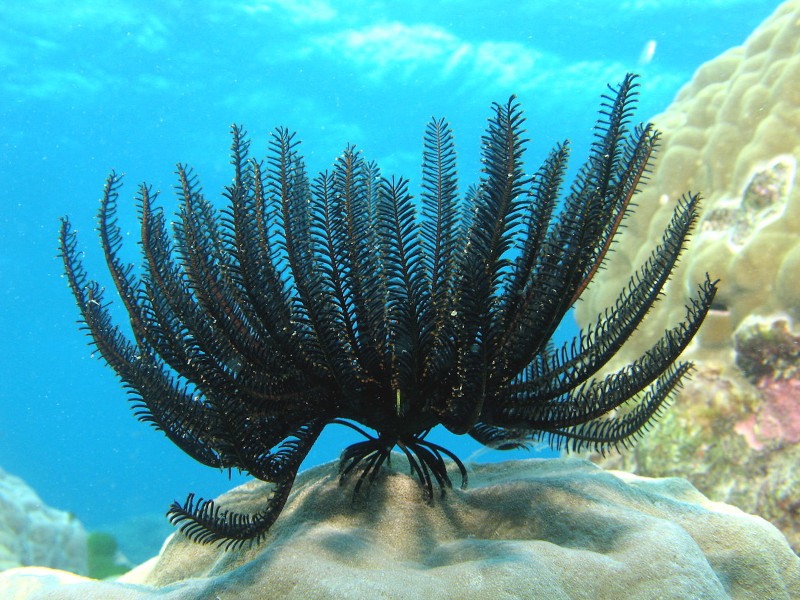Feather Starfish Facts
- The magnificent Feather Starfish ranks as one of the most beautiful and unique species of marine animal found in any of the world’s oceans.
- Their origins date back to the Ordovician Period, which began more than 488 million years ago. Therefore, they remain one of the oldest known classes on the planet.
- Also, as an echinoderm, this creature developed a distinctly different feeding process from most other animals. The Feather Starfish and its related species possess no true stomach.
- Yet, despite the name, they do not rank as true starfish. Yet, as crinoids, marine biologists consider them to be close cousins of the starfish as they share many of the same characteristics.
Feather Starfish Physical Description
The Feather Starfish attains a rather average size of approximately 12 in (30 cm). Despite their moderate size, they display spectacular beauty. Their arms branch numerous times and result in as many as 200 branches.
By and large, the more than 600 varieties display a vivid range of colors. The mouth appears on the upper surface, and numerous feeding arms surround it. This animal has a protective internal skeleton composed of calcium carbonate, just as true starfish.
Like its starfish cousins, this species also possesses a remarkable water vascular system, instead of a bloodstream. Lastly, they breathe by absorbing oxygen directly through their tube feet.
- Kingdom: Animalia
- Phylum: Echinodermata
- Class: Crinoidea
- Order: Comatulida
- Family: Antendonidoe
- Genus: Florometra
Feather Starfish Distribution, Habitat, and Ecology
The most noteworthy fact about the Feather Starfish remains their wide distribution. They exist in the oceans of nearly every temperate and tropical climate. Furthermore, the various species inhabit depths ranging from the surface to approximately 30,000 ft (9,000 m).
This remarkable feeds by catching particles of food with its feeder arms and propelling it towards the mouth. They primarily feed on plankton, yet will also consume particles of detritus. While they themselves possess few natural predators, sea urchins have been known to prey upon them.
Reproduction occurs via spawning, and once hatched, the larvae mature rapidly.
Check out our other articles on 4 Remarkable Louisiana Reptiles, Striped Possum, Coast Coral Tree, Lumpfish, Starfish, Flamboyant Cuttlefish, Marine Ribbon Worm, Japanese Spider Crab

